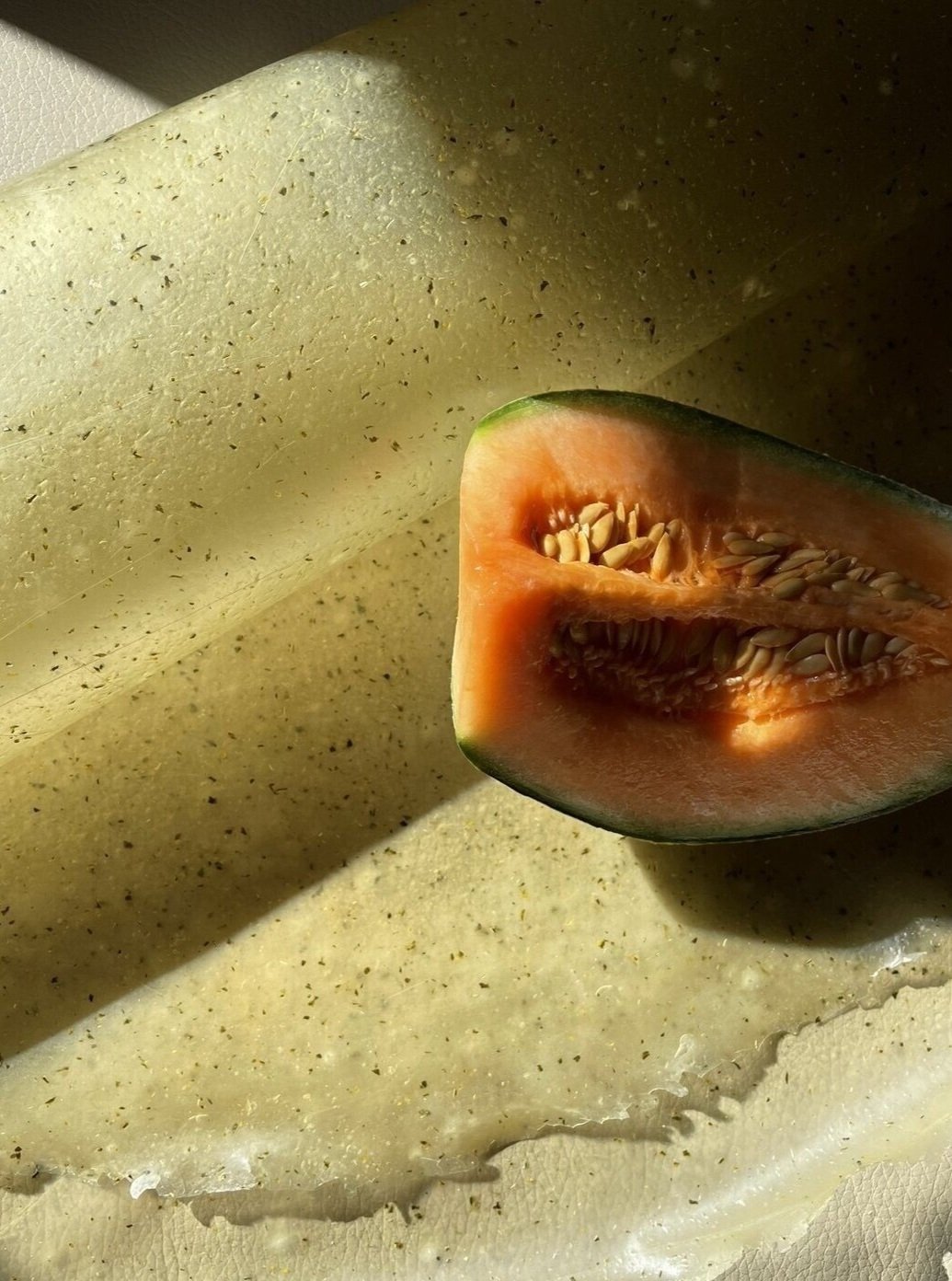Bio-based plastics: compostable or biodegradable
RESEARCH BY Berta Daina
BioMaterial made by organic waste
Words Nina Zulian Edition Matthew Burgos
Bio-based plastics may have taken the spotlight as solutions and alternatives to oil-based plastics, but plastics made from bio-based materials are not necessarily compostable or biodegradable. Berta Daina - the designer, researcher and founder of Agro - develops biomaterial derived from organic waste, such as fruit scraps. Unlike conventional, petroleum-derived plastics, this material comes into contact with microorganisms once it is deposited with organic waste, degrading it until it completely disappears.
She clarifies the difference between compostable or biodegradable.“These two terms are often used synonymously because they are difficult to differentiate and so closely related,” Daina tells Plural. “Both production processes use substances of natural origin that degrade naturally through these living organisms. Their difference lies in the decomposition result.”
Biodegradable products comprise naturally occurring substances, but can also be made from synthetic substances. It refers to a product’s ability to be completely decomposed by microorganisms. "On the other hand, compostable products contain only natural substances as compost is obtained from the biodegradation of a product rich in organic matter and free from toxic and synthetic elements," says Daina. Therefore, compostable products are biodegradable with an additional benefit: during decomposition, they release valuable nutrients into the soil, creating compost which benefits growing plants as a natural fertilizer and pesticide."
“These two terms are often mistakenly used synonymously because they are difficult to differentiate and so closely related. Both production processes use substances of natural origin that degrade naturally through these living organisms. Their differentiation lies in the decomposition result.
Biodegradable products comprise naturally occurring substances but can also be made from synthetic substances. It refers to a product’s ability to be completely decomposed by microorganisms.
Compostable products, contrastingly, comprise only natural substances. Compost is obtained from the biodegradation of a product rich in organic matter and without toxic and synthetic elements. Therefore, compostable products are biodegradable with an additional benefit: during decomposition, they release valuable nutrients into the soil, creating compost, which benefits growing plants as a natural fertiliser and pesticide.”
Bioplastics
Nowadays, bioplastics are used in disposable items such as packaging, containers, straws, bags and bottles, non-disposable carpets, plastic piping, telephone casings, 3D printing, car insulation, and medical implants. The global bioplastics market is projected to grow from $17 billion this year to nearly $44 billion by 2022.
While the biodegradability of bioplastics is a great advantage, most need high-temperature industrial composting facilities to break them down, and very few cities have the infrastructure dedicated to this process. As a result, bioplastics often end up in landfills, deprived of oxygen. They can release methane, a greenhouse gas, 23 times more potent than carbon dioxide.
When bioplastics are not disposed of properly, they can contaminate batches of recycled plastic and damage recycling infrastructure. The land needed to produce bioplastics competes with food production since both lands can produce crops for bioplastics and of food.
The Plastic Pollution Coalition suggests that to meet the growing global demand for bioplastics, more than 3.4 million acres of land - an area larger than Belgium, the Netherlands, and Denmark combined - are needed to grow the crops. On top of this, the oil used to run the agricultural machinery produces greenhouse gas emissions.
Bioplastics are also relatively expensive compared with oil-based materials, but prices are falling as researchers and companies develop more efficient and environmentally friendly strategies for bioplastic production.
Bioplastic from food waste
The research on bioplastic made from food waste has a double benefit by indirectly reducing plastic and food waste simultaneously. With the great abundance of raw materials coming from the food industry and household consumption - such as waste sludge, cassava peel, banana peel, pineapple peel, durian seed, jackfruit seed and avocado seed - it is possible to transform the waste into a material similar to the qualities of plastic made from petroleum, but a compostable and biodegradable one.
Beyond the great prospect of bioplastics, there is still a need to rethink the current environmental economy and society's high rate of consumption.
Info
Berta Daina - Agro
Instagram @agro.biomaterials
Workshop - 29.01.2022
Bioplastics with organic waste
More details: @agro.biomaterials
Words
Nina Zulian
Edition
Matthew Burgos

